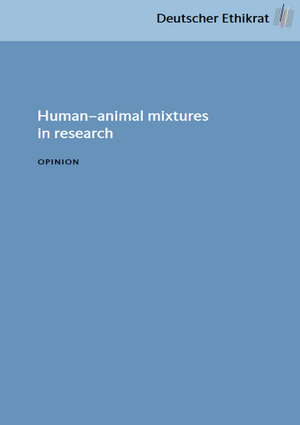Human–animal mixtures in research
Published: 27 September 2011
The breeding of mice as "model organisms" for research on human disorders by the introduction of disease-specific human genes into the mouse genome has been commonplace since as long ago as the 1980s. Researchers are now working on the transfer not only of genes but also of entire chromosomes. In addition, human cells have been transferred into the brains of experimental animals, including primates, for the investigation and possible eventual treatment of disorders. Such experiments increasingly call into question the biological species boundary between humans and animals. For this reason, the Ethics Council considers it necessary to identify the ethical challenges that may be presented by the creation of human-animal mixtures and to determine where it may be appropriate to set binding limits. With this in view the Ethics Council concentrates its attention on the transfer of human material to animals, which it examines on the basis of three examples: cytoplasmic hybrids (cybrids), formed by the insertion of a human cell nucleus into an enucleated animal egg; transgenic animals with human genetic material; and the transfer of human cells into the brains of fetal or adult animals (brain chimeras).
The Ethics Council endorses the prohibition laid down in Section 7 of the Embryonenschutzgesetz [ESchG – Embryo Protection Act] on the transfer of human embryos into an animal or the creation of interspecific chimeras or hybrids using human embryos or human and animal gametes. These restrictions should be supplemented by a ban on the transfer of animal embryos into humans, a ban on the introduction of animal material into the human germline, and a ban on procedures that could result in the formation of human egg or sperm cells in an animal.

